Do you have a question about the Samsung C49J890DK Series and is the answer not in the manual?
Ensure adequate space around the product for ventilation to prevent overheating.
Details warnings and cautions regarding product usage to prevent injury or damage.
Advises on storing the product, especially regarding high-glossy models and cleaning.
Provides step-by-step instructions for cleaning the monitor panel and exterior safely.
Outlines essential safety guidelines for using power cords, plugs, and sockets.
Covers crucial warnings and precautions for safely installing the monitor in various environments.
Lists important operational warnings and precautions for safe product usage and maintenance.
Identifies and describes the monitor's physical components, including the control panel.
Explains the function of direct shortcut buttons for quick access to settings like Eye Saver Mode.
Details how to use the function key guide to navigate and select various monitor settings.
Guides users on adjusting picture settings like brightness, contrast, and eye saver mode.
Explains how to adjust the monitor's volume and use the mute function.
Illustrates and describes all the input and output ports available on the monitor.
Provides instructions on how to update the monitor's firmware using a USB drive.
Details the steps for adjusting the monitor's tilt and height for optimal viewing.
Explains how to use an anti-theft lock to secure the monitor in public places.
Step-by-step guide for assembling the monitor stand (Type one).
Step-by-step guide for assembling the monitor stand (Type two).
Instructions on how to detach the monitor stand to prepare for wall mounting.
Guide on how to mount the monitor to a wall using a VESA bracket.
General guidance on connecting various source devices and specific instructions for HDMI connection.
Instructions for connecting the monitor using a DisplayPort (DP) cable.
Instructions for connecting the monitor using a USB Type-C cable.
Explains how to connect headphones to the monitor for audio output.
Details how to use the monitor as a USB hub when connected via USB Type-C.
Explains how to connect multiple devices to the monitor and use them as a USB hub.
Instructions for connecting the monitor to a power outlet.
Guide on organizing and routing connected cables neatly using the monitor's cable management features.
Recommendations for maintaining a proper posture while using the monitor to prevent fatigue.
Instructions on installing necessary drivers for the monitor's optimal performance.
Guidance on setting the monitor to its recommended resolution for best display quality.
Explains the SAMSUNG MAGIC Bright feature for optimizing picture quality in different environments.
How to adjust the overall brightness of the monitor's display.
How to adjust the contrast between objects and their background for clarity.
How to adjust the sharpness to make object outlines clearer or softer.
How to adjust the tint, saturation, and color tone of the screen.
Feature to enhance picture detail and vividness, especially for low-resolution content.
Mode designed to reduce eye strain by lowering blue light emission.
Adjusts black levels for improved image quality when using HDMI connections.
Options for changing the displayed picture aspect ratio (Auto, Wide, 4:3, 16:9, Screen Fit).
Allows fine-tuning of horizontal and vertical screen positioning.
Information about the monitor's measured data at the time of shipment.
Enables or disables Picture-in-Picture (PIP) and Picture-by-Picture (PBP) display modes.
Selects the size and aspect ratio for the sub-screen in PIP/PBP modes.
Adjusts the aspect ratio (e.g., 16:9, 21:9) for individual screens in PBP mode.
Allows selection of the sub-screen's position in PIP mode.
Selects which screen's audio output to hear.
Selects the input source for the main screen and sub-screens in PIP/PBP modes.
Enables switching USB devices between different input sources when PIP/PBP is active.
Adjusts the image size for sub-screens in PIP and PBP modes.
Adjusts contrast levels for individual screens in PIP and PBP modes.
Adjusts the transparency level of the on-screen display menus.
Allows adjustment of the on-screen display menu's position.
Sets the display language for the on-screen menus.
Configures how long the on-screen display menu remains visible before disappearing.
Assigns correct USB ports for HDMI and DP input sources for USB Switch functionality.
Selects the DisplayPort version (1.1 or 1.2) for optimal compatibility.
Selects the HDMI mode (e.g., 1.4) for connection with various devices.
Reduces power consumption by optimizing screen brightness and current.
Configures automatic power-off timers for the monitor.
Sets the method (Auto/Manual) for the monitor to recognize input signals.
Controls the response rate of buttons when pressed repeatedly.
Configures the behavior of the power indicator LED (Working/Stand-by).
Resets all monitor settings to their default factory values.
Software to partition the monitor screen into multiple sections for enhanced multitasking.
Lists the OS and hardware requirements for installing the Easy Setting Box software.
Notes potential issues and restrictions that may affect the Easy Setting Box installation.
Steps to follow for basic troubleshooting before contacting support.
Guide to performing self-diagnosis tests to check product functionality.
How to check and set the correct display resolution and frequency.
Troubleshooting steps for common installation problems in PC mode.
Addresses issues related to screen display, including blank screens and power LED status.
Troubleshooting steps for problems related to audio output or lack thereof.
Information regarding issues originating from the connected source device.
Solutions for common problems encountered with the monitor's USB interface.
Frequently asked questions and answers regarding monitor settings and usage.
Provides general information and specifications for the monitor model.
Lists supported resolutions, frequencies, and pixel clocks for optimal display.
Details service costs for non-defects, customer faults, and other issues.
Information on purchasing and benefits of an extended warranty for the product.
Ensure adequate space around the product for ventilation to prevent overheating.
Details warnings and cautions regarding product usage to prevent injury or damage.
Advises on storing the product, especially regarding high-glossy models and cleaning.
Provides step-by-step instructions for cleaning the monitor panel and exterior safely.
Outlines essential safety guidelines for using power cords, plugs, and sockets.
Covers crucial warnings and precautions for safely installing the monitor in various environments.
Lists important operational warnings and precautions for safe product usage and maintenance.
Identifies and describes the monitor's physical components, including the control panel.
Explains the function of direct shortcut buttons for quick access to settings like Eye Saver Mode.
Details how to use the function key guide to navigate and select various monitor settings.
Guides users on adjusting picture settings like brightness, contrast, and eye saver mode.
Explains how to adjust the monitor's volume and use the mute function.
Illustrates and describes all the input and output ports available on the monitor.
Provides instructions on how to update the monitor's firmware using a USB drive.
Details the steps for adjusting the monitor's tilt and height for optimal viewing.
Explains how to use an anti-theft lock to secure the monitor in public places.
Step-by-step guide for assembling the monitor stand (Type one).
Step-by-step guide for assembling the monitor stand (Type two).
Instructions on how to detach the monitor stand to prepare for wall mounting.
Guide on how to mount the monitor to a wall using a VESA bracket.
General guidance on connecting various source devices and specific instructions for HDMI connection.
Instructions for connecting the monitor using a DisplayPort (DP) cable.
Instructions for connecting the monitor using a USB Type-C cable.
Explains how to connect headphones to the monitor for audio output.
Details how to use the monitor as a USB hub when connected via USB Type-C.
Explains how to connect multiple devices to the monitor and use them as a USB hub.
Instructions for connecting the monitor to a power outlet.
Guide on organizing and routing connected cables neatly using the monitor's cable management features.
Recommendations for maintaining a proper posture while using the monitor to prevent fatigue.
Instructions on installing necessary drivers for the monitor's optimal performance.
Guidance on setting the monitor to its recommended resolution for best display quality.
Explains the SAMSUNG MAGIC Bright feature for optimizing picture quality in different environments.
How to adjust the overall brightness of the monitor's display.
How to adjust the contrast between objects and their background for clarity.
How to adjust the sharpness to make object outlines clearer or softer.
How to adjust the tint, saturation, and color tone of the screen.
Feature to enhance picture detail and vividness, especially for low-resolution content.
Mode designed to reduce eye strain by lowering blue light emission.
Adjusts black levels for improved image quality when using HDMI connections.
Options for changing the displayed picture aspect ratio (Auto, Wide, 4:3, 16:9, Screen Fit).
Allows fine-tuning of horizontal and vertical screen positioning.
Information about the monitor's measured data at the time of shipment.
Enables or disables Picture-in-Picture (PIP) and Picture-by-Picture (PBP) display modes.
Selects the size and aspect ratio for the sub-screen in PIP/PBP modes.
Adjusts the aspect ratio (e.g., 16:9, 21:9) for individual screens in PBP mode.
Allows selection of the sub-screen's position in PIP mode.
Selects which screen's audio output to hear.
Selects the input source for the main screen and sub-screens in PIP/PBP modes.
Enables switching USB devices between different input sources when PIP/PBP is active.
Adjusts the image size for sub-screens in PIP and PBP modes.
Adjusts contrast levels for individual screens in PIP and PBP modes.
Adjusts the transparency level of the on-screen display menus.
Allows adjustment of the on-screen display menu's position.
Sets the display language for the on-screen menus.
Configures how long the on-screen display menu remains visible before disappearing.
Assigns correct USB ports for HDMI and DP input sources for USB Switch functionality.
Selects the DisplayPort version (1.1 or 1.2) for optimal compatibility.
Selects the HDMI mode (e.g., 1.4) for connection with various devices.
Reduces power consumption by optimizing screen brightness and current.
Configures automatic power-off timers for the monitor.
Sets the method (Auto/Manual) for the monitor to recognize input signals.
Controls the response rate of buttons when pressed repeatedly.
Configures the behavior of the power indicator LED (Working/Stand-by).
Resets all monitor settings to their default factory values.
Software to partition the monitor screen into multiple sections for enhanced multitasking.
Lists the OS and hardware requirements for installing the Easy Setting Box software.
Notes potential issues and restrictions that may affect the Easy Setting Box installation.
Steps to follow for basic troubleshooting before contacting support.
Guide to performing self-diagnosis tests to check product functionality.
How to check and set the correct display resolution and frequency.
Troubleshooting steps for common installation problems in PC mode.
Addresses issues related to screen display, including blank screens and power LED status.
Troubleshooting steps for problems related to audio output or lack thereof.
Information regarding issues originating from the connected source device.
Solutions for common problems encountered with the monitor's USB interface.
Frequently asked questions and answers regarding monitor settings and usage.
Provides general information and specifications for the monitor model.
Lists supported resolutions, frequencies, and pixel clocks for optimal display.
Details service costs for non-defects, customer faults, and other issues.
Information on purchasing and benefits of an extended warranty for the product.
| Screen Size | 49 inches |
|---|---|
| Resolution | 3840 x 1080 |
| Panel Type | VA |
| Refresh Rate | 144 Hz |
| Aspect Ratio | 32:9 |
| Contrast Ratio | 3000:1 |
| Connectivity | DisplayPort, HDMI, USB-C |
| Curvature | 1800R |
| Speakers | Yes |
| Viewing Angle | 178° (H) / 178° (V) |
| VESA Mount | 100 x 100 mm |
| Response Time | 5 ms |
| Color Support | 16.7 million colors |
| Ports | 1 x DisplayPort, 1 x USB-C, USB 3.0 |
| Brightness | 350 cd/m² |
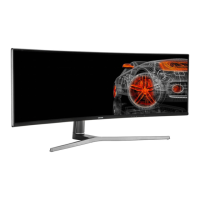

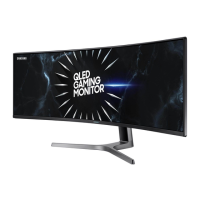
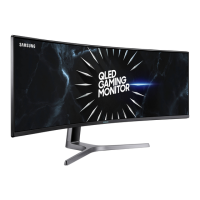
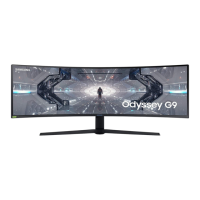
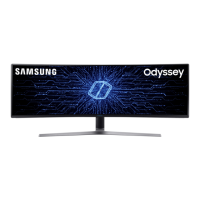
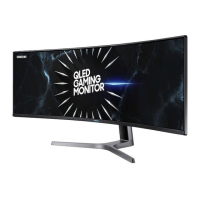
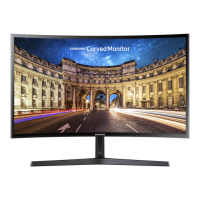

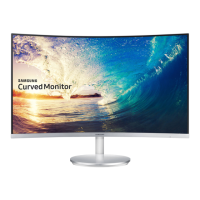


